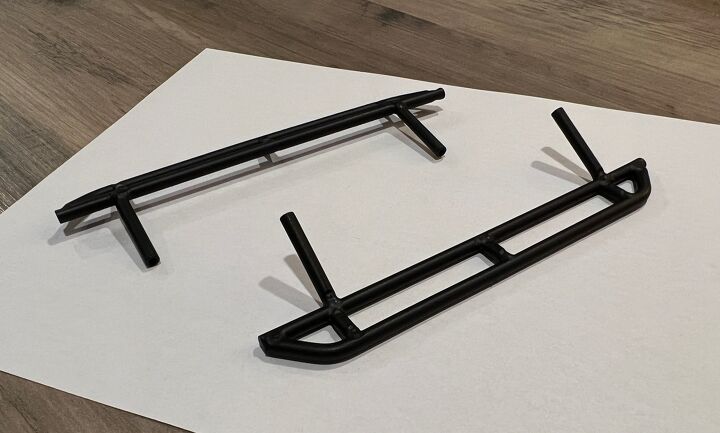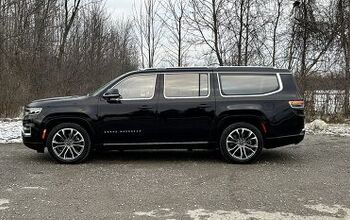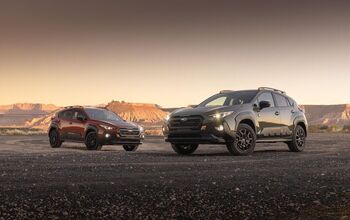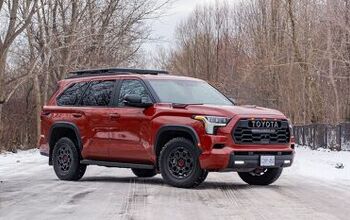What are Rock Sliders and Why Does Your 4x4 Need Them?

As fun and exciting as it is, off-roading does pose inherent risks to a vehicle’s body panels and mechanical wellbeing alike. The method to help prevent this from happening is to add protective armor to the 4x4. This commonly comes in the form of skid plates and steel bumpers, but rock sliders (also known as rock rails) are the best way to help rocker panels and doors from sustaining damage, while helping improve off-road performance in the process.
Off-roading is a thrilling and adventurous activity that allows enthusiasts to explore challenging terrains and push the limits of their vehicles. Whether traversing rocky trails, crawling over boulders, or navigating uneven surfaces, off-roaders often encounter obstacles that can pose a threat to the vehicle's undercarriage. This is where rock sliders come into play, serving as a crucial accessory to protect the vehicle and inadvertently enhance the off-roading experience.
Understanding Rock Sliders
Rock sliders, also known as rocker guards or rock rails, are specialized components designed to safeguard the sides of off-road vehicles from rocks, debris, and other obstacles encountered on the trail. Typically made from durable materials such as steel or aluminum, rock sliders are mounted to the vehicle's frame or body and extend along the lower sides between the doors, providing a protective barrier between the terrain and vulnerable components.
Key Features and Construction
Material Strength: Rock sliders are constructed from robust materials to withstand the impact of rocks and other obstacles. Steel is a popular choice for its strength, while aluminum offers a lighter alternative without compromising durability. Drawn Over Mandrel (DOM) is a common option to look for, ideally in 0.120″ or greater thicknesses.
Tubular vs. Plate Design vs. Kick-Out: Rock sliders come in two primary designs: Tubular and plate. Tubular rock sliders feature a round or oval-shaped tube construction, providing an effective barrier against impacts. Plate rock sliders, on the other hand, consist of a flat plate that extends from the vehicle's body to deflect obstacles. The former is slim and minimalistic while the latter can offer functionality as a step or running board in a pinch. Meanwhile, kick-out sliders run the length of the doors and then sweep wider out away from the vehicle toward the rear tire. This adds bulk and weight, but the kick-out is a great tool to help deflect rocks or trees while also serving as a tool that can be used to help the vehicle pivot around the aforementioned obstacles.
Weld-on vs. bolt-on: While weld-on rock sliders are traditionally a little less expensive, the convenience of bolt-on goes a long way to making the installation approachable. The upside to weld-on is no extra mounting point like nuts and bolts that are susceptible to damage, but the downside is you need to know how to weld and have the tools to do so (or pay a welder to get the job done). Bolt-ons are the easier way to go about adding rock sliders, but they do have a little in the way of extra components that can sustain damage.
Powder Coating: Many rock sliders undergo a powder coating process to enhance corrosion resistance and ensure longevity. This coating not only protects the sliders from rust but also adds a stylish, bedliner-esque finish to complement the vehicle's aesthetics. Going for this option usually costs extra, but the powder coating treatment does withstand abuse quite a bit better than a spray paint rattle can job done in your own garage.
Why You Need Rock Sliders for Off-Roading
Rocker Panel Protection: The underside of an off-road vehicle is susceptible to damage when navigating rocky or obstacle-strewn terrain. Rock sliders act as a shield, preventing rocks, roots, and other obstacles from causing significant harm to vital components such as the rocker panels, door sills, doors, fenders, and more.
Structural Integrity: Off-roading can subject a vehicle to extreme forces and impacts. Rock sliders contribute to the overall structural integrity of the vehicle, providing additional support and reinforcement to the chassis and body.
Preserving Body Panels: The sides of a vehicle are prone to scratches, dents, and other cosmetic damages during off-roading adventures. Rock sliders serve as a sacrificial layer, absorbing the impact and preserving the vehicle's body panels from unsightly blemishes.
Improved Off-Road Capability: With rock sliders in place, off-road enthusiasts gain the confidence to tackle challenging terrains without fear of damaging their vehicles. The added protection allows for more aggressive driving and maneuvering, enhancing the overall off-road experience. You can effectively use the sliders as a pivot point on which to rotate the vehicle in some situations, like making a tight turn around a tree or over a rock, which in turn allows for a vehicle to traverse a more difficult trail than it otherwise would. We're talking at-the-limit tidbits here, but the sliders do make a big difference in this regard.
Vehicle Resale Value: Well-maintained off-road vehicles with rock sliders are often more attractive to potential buyers. The presence of these protective components signals that the vehicle has been used responsibly in off-road settings, potentially increasing its resale value.
Installation and Considerations
While rock sliders offer valuable protection, their effectiveness depends on proper installation and compatibility with the specific vehicle. It is crucial to follow manufacturer guidelines and, if necessary, seek professional installation to ensure a secure fit. In the case of our GX460 project vehicle, installation was a bear. Similarly, installing rock sliders on the RC4WD C2X scale rock crawler was more intricate than one might expect, requiring the removal of the suspension, driveshafts, and more. Frozen fingers from winter's first cold didn't help and tiny screws and the areas into which they must be navigated don't help. All-in-all, rock slider installation isn't rocket science, but it probably shouldn't be attempted by those with no skill or confidence whatsoever.
Off-road enthusiasts should also consider the type of off-roading they engage in when choosing rock sliders. For rock crawling and extreme terrain, heavy-duty steel sliders may be preferred, while lightweight aluminum sliders could be suitable for less demanding trails and overlanding.
At the end of the day, rock sliders are an indispensable accessory for off-road enthusiasts looking to explore challenging terrains with confidence. Their robust construction, strategic placement, and ability to protect vital components make them a valuable investment for anyone serious about off-roading. As technology and materials continue to advance, rock sliders will likely evolve to provide even more effective protection, allowing off-road enthusiasts to push the boundaries of their adventures while safeguarding their vehicles.

Ross hosts The Off the Road Again Podcast. He has been in the off-road world since he was a kid riding in the back of his dad’s YJ Wrangler. He works in marketing by day and in his free time contributes to Hooniverse, AutoGuide, and ATV.com, and in the past has contributed to UTV Driver, ATV Rider, and Everyday Driver. Ross drives a 2018 Lexus GX460 that is an ongoing build project featured on multiple websites and the podcast.
More by Ross Ballot





































Comments
Join the conversation